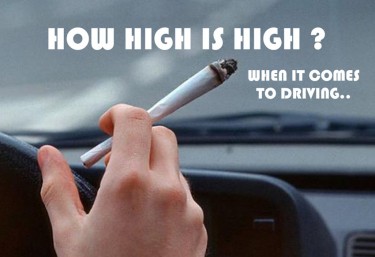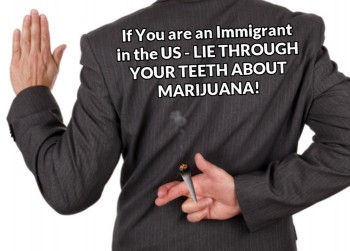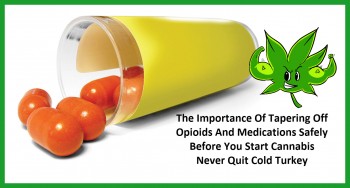With the increasing number of states legalizing cannabis for medical and recreational purposes, there are growing concerns about the potential rise in incidents of cannabis-impaired driving. Unlike alcohol impairment, which can be easily tested using a breathalyzer, identifying cannabis impairment requires a more intricate approach.
Police officers must rely on observational skills, physical tests, and specialized technology to determine if a driver is under the influence of cannabis. This article will explore law enforcement's various techniques to test for cannabis-impaired driving. So fasten your seatbelt, grab a snack, and delve into cannabis-impaired driving testing.
Roadside Testing
Suppose a driver is pulled over, and a police officer has reason to believe they may have cannabis, alcohol, or both in their system. In that case, the officer is legally authorized to request an oral fluid sample and/or perform a Standardized Field Sobriety Test (SFST).
It is important to note that the results of these roadside tests cannot be used as the basis for charging someone or presented as evidence in a criminal trial. Consequently, if a driver fails either of these tests, the police officer can request additional testing to be conducted at the police station.
Standardized Field Sobriety Test (SFST)
Police officers use a Standardized Field Sobriety Test (SFST) to assess drivers' eye movements. They conduct a series of physical tests, such as asking them to walk in a straight line, stand and turn, or balance on one leg.
Oral Fluid (Saliva) Sample Testing
To request a driver to undergo a roadside oral fluid screening test, police officers must have reasonable suspicion that the driver has drugs in their system. Such suspicion can arise from observing erratic lane changes, unsafe following distances, muscle tremors, red eyes, weird speech patterns, and other factors.
Section 320.27(1) of the Criminal Code permits police officers to request bodily fluid testing for anyone driving a motor vehicle within three hours of the test. This includes the administration of oral fluid (saliva) testing at the roadside. It is essential to differentiate between the three-hour time limit for collecting bodily substance samples and the offence of impaired driving.
The latter encompasses anyone with a blood-drug concentration equal to or surpassing the regulated level within two hours of ceasing to operate a motor vehicle.
The prescribed limits for cannabis are outlined as follows:
-
Cannabis (THC): THC level between 2 nanograms (ng) and 5 nanograms (ng) per ml of blood (considered a less severe offence);
-
Combination of cannabis and alcohol: Alcohol level of 50 mg or more per 100 ml of blood. A THC level of 2.5 nanograms (ng) or more per ml of blood.
When a police officer requests an oral fluid sample, they can use Approved Drug Screening Equipment (ADSE) to analyze a driver's saliva. In Canada, an oral fluid screening device comprises a reader and an oral fluid collection kit.
This test can identify drugs in oral fluids, such as THC, the primary impairing compound in cannabis. It can also ascertain whether an individual has recently consumed an illegal amount of cannabis containing THC.
Police Station Testing
If a driver produces a positive oral sample test or fails an SFST, they could face arrest and be taken to a police station for additional testing. At the police station, officers who have received specialized training as drug recognition experts may perform a drug recognition evaluation (DRE) on drivers.
Drug Recognition Evaluation (DRE)
A DRE is a more comprehensive assessment than an SFST. In addition to administering sobriety tests similar to those in SFST, it involves performing clinical tests. These include checking blood pressure, pulse rate, body temperature, and measuring pupil size under various lighting conditions. The drug recognition evaluation comprises 12 steps.
Following a DRE, if an officer concludes that drugs have impaired a driver's motor vehicle capacity, the driver could face charges under section 320.14 of the Criminal Code.
Breath sample
If police officers suspect that a driver has consumed alcohol or want to eliminate alcohol impairment when cannabis impairment is suspected, they will request a breath sample. Breath tests conducted at a police station or medical facility may be admissible as evidence in a criminal trial and are commonly known as evidentiary breath tests.
Bodily Fluid Samples
In addition to a DRE and breath sample, the police may request bodily fluid samples to corroborate or refute the results.
Blood samples need to be collected under the supervision of a trained medical professional. Blood samples can reveal the following:
Blood-Alcohol Concentration (BAC): This can be determined through blood samples. Suppose the concentration is discovered to be above 80 mg of alcohol per 100 ml of blood while the driver is operating a vehicle. In that case, this constitutes a criminal offence commonly known as "over 80." In such instances, drivers are typically charged with one or more criminal driving crimes.
Blood-Drug Concentration: If the concentration of a drug in the blood exceeds the legal limit (such as 2 ng or more of THC per ml of blood), it may result in charge of drug-impaired driving.
Confirming the findings of a DRE, criminal driving charges may be applied based on the results of urine and saliva samples.
Conclusion
Driving under the influence of cannabis is a serious crime that can have fatal repercussions. Canadian law enforcement authorities can access various instruments and tests to detect and prosecute drunk driving, including drug identification tests, standardized field sobriety tests, and breath, blood, saliva, and urine samples.
Even though these laws attempt to keep our roadways safe, the ultimate responsibility for making wise judgments and abstaining from driving while intoxicated rests with individual drivers. This entails being aware of the possible effects of prescription and over-the-counter pharmaceuticals, as well as illegal substances and alcohol.
As technology develops, we should expect increasingly more precise and dependable methods for identifying intoxication while driving. However, it is our responsibility as individuals to stop drunk driving. We can contribute to ensuring the safety of everyone on the road by making responsible decisions and taking action to avoid drunk driving.







